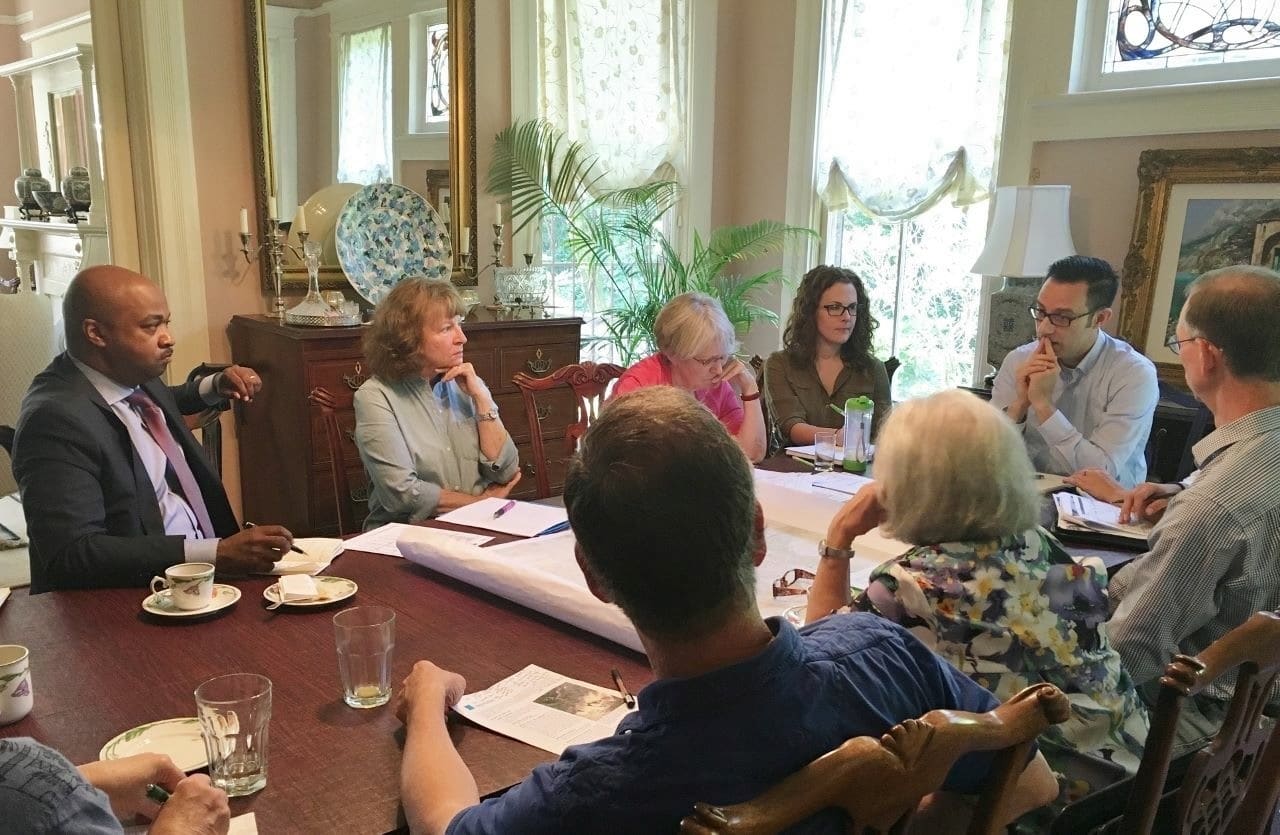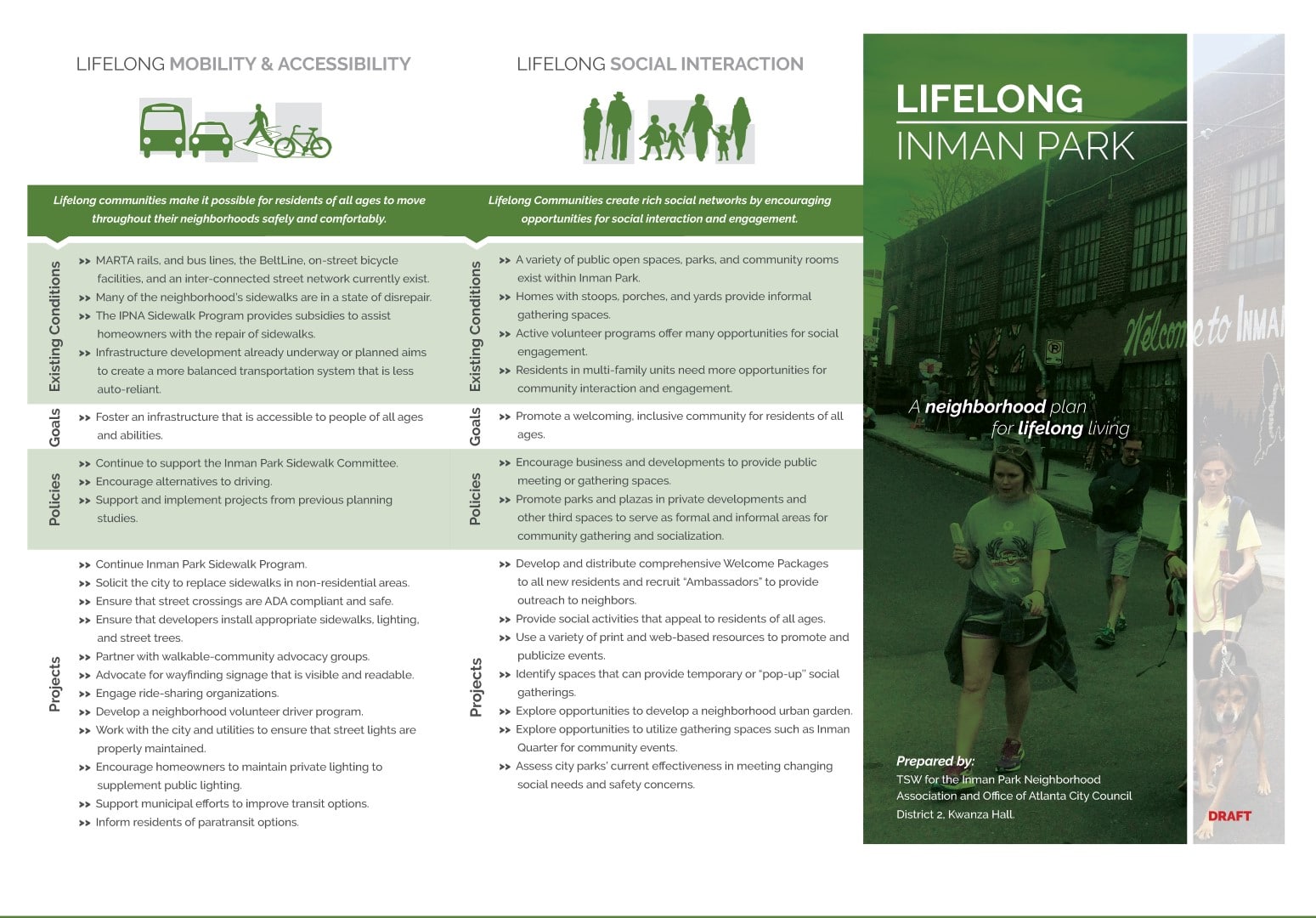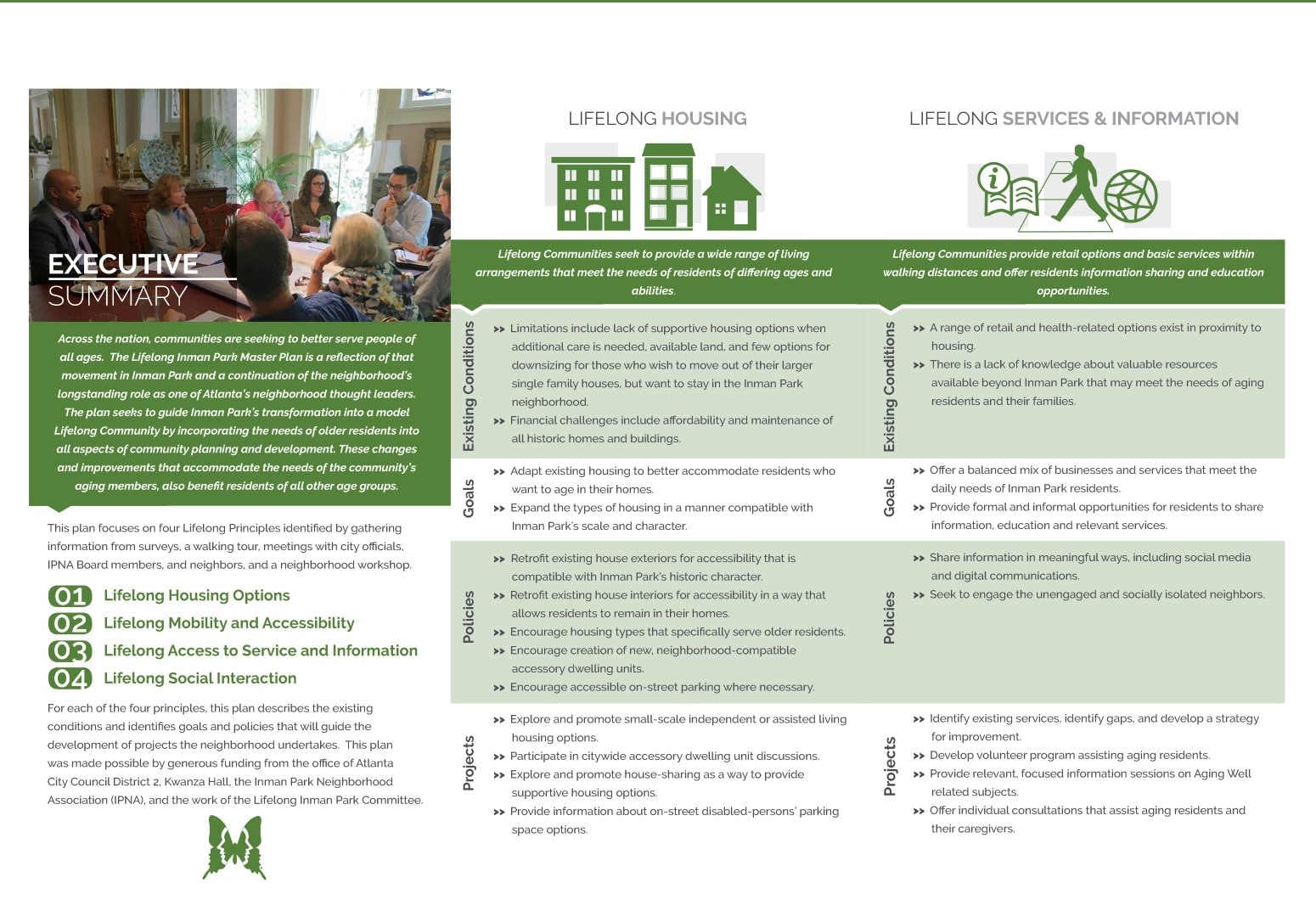Details:
Client: Inman Park Neighborhood Association (IPNA) and Office of Atlanta City Council District 2, Kawanza Hall
Location: Atlanta, Georgia
Status: Completed in 2017
Highlights:
Description:
Across the nation, there is a movement to provide communities that serve people at various stages in their lives. This Lifelong Inman Park Master Plan is a reflection of that movement in Inman Park and is a continuation of the neighborhood’s longstanding role as one of Atlanta’s neighborhood thought leaders. In response to a changing demographic and profound increase in an aging population, coupled with a remarkable revitalization that now makes Inman Park one of Atlanta’s most desirable neighborhoods, the Inman Park Neighborhood Association, the Lifelong Inman Park Committee; the Office of Atlanta City Council District 2, Kwanza Hall; and a team from TSW came together to develop a Master Plan that aims to transform Inman Park into a Lifelong Community.
The goals of this movement, as identified by the Atlanta Regional Commission are to encourage a mix of housing types that appeal to both young and old people; provide opportunities for healthy living; create ways for people to get around who do not drive; and allow convenient access to daily needs. The Lifelong Inman Park plan focuses on four principles that were identified by first understanding the existing conditions of the community, then exploring future possibilities, and, finally, defining specific policies and projects in the areas of housing, access to services and information, social interaction, and mobility and accessibility.
Highlights of key recommendations in the plan include the following:
- Standards for retrofitting historic houses for interior and exterior accessibility;
- Steps to developing independent or assisted living facilities in Inman Park;
- Ways to engage the un-engaged through new programs, information sessions, and individual consultations;
- Ideas for providing social gathering spaces through the utilization of “third spaces” and the promotion of parks and plazas where events can occur; and
- Best practices and policies for designing walkable communities.



